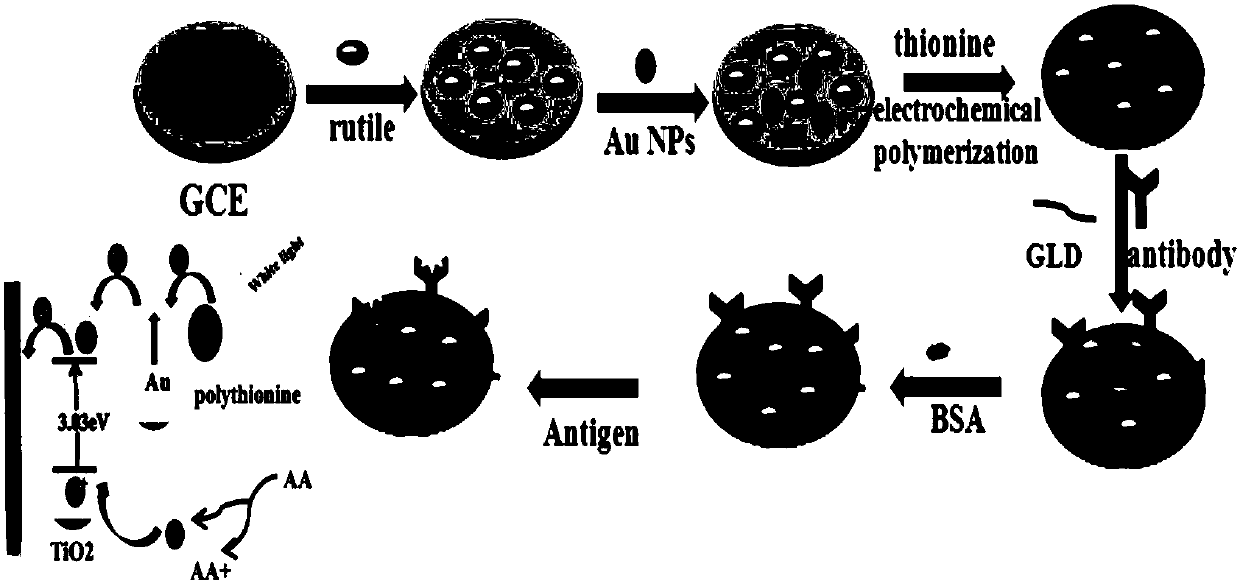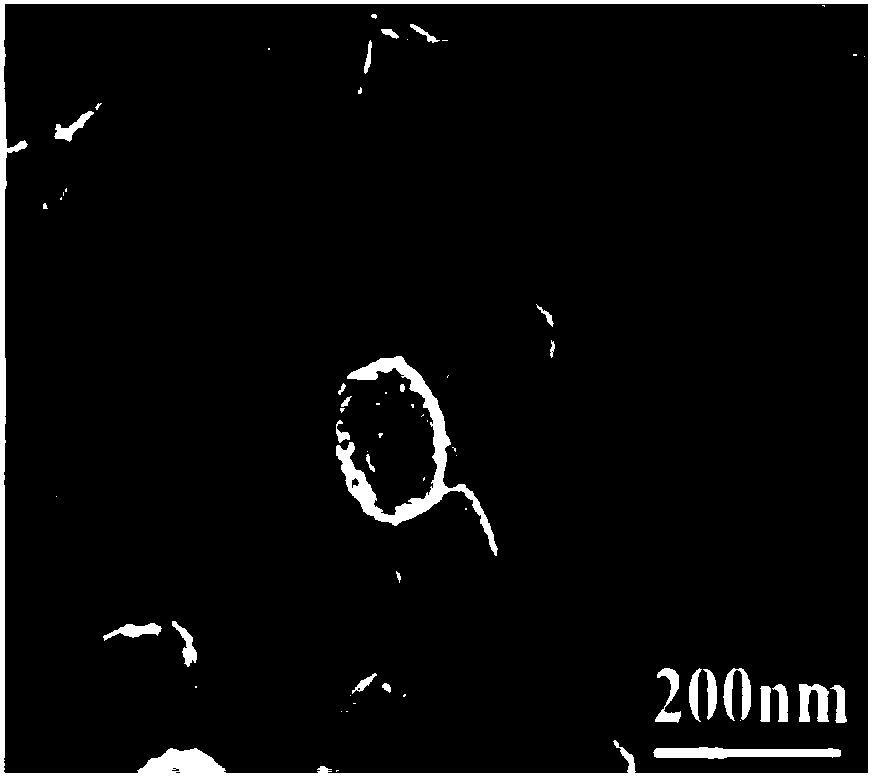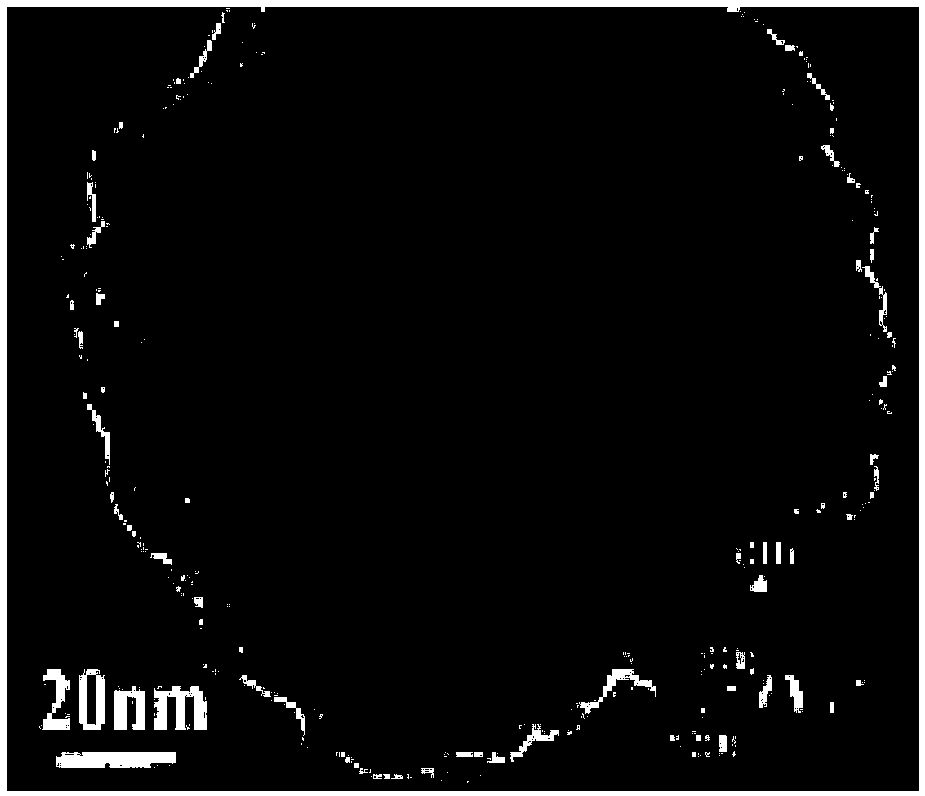Label-free zearalenone photoelectrochemistry detection method and sensor based on TiO2 mesocrystal
A technology of zearalenone and mesoscopic crystals, which is applied in the direction of material electrochemical variables, scientific instruments, titanium oxide/hydroxide, etc., can solve the problems of low photoelectric conversion efficiency and large band gap, and achieve improved sensitivity , Enhance the effect of transmission speed
- Summary
- Abstract
- Description
- Claims
- Application Information
AI Technical Summary
Problems solved by technology
Method used
Image
Examples
Embodiment 1
[0025] A TiO-based 2 Preparation method of label-free photoelectrochemical sensor of mesoscopic crystal (such as figure 1 shown):
[0026](1) Pretreatment of the glassy carbon electrode: the glassy carbon electrode is first mechanically polished and polished on the suede covered with alumina powder, washed with secondary water to remove the residual powder on the surface, and then moved into an ultrasonic water bath for cleaning until it is cleaned, and finally Wash thoroughly with ethanol, dilute acid and water;
[0027] (2) Add dropwise 4 μL of the rutile TiO prepared by the method in Example 2 with a concentration of 3 mg / ml 2 The mesoscopic crystal (RTM) suspension is placed on the surface of a clean glassy carbon electrode, dried under an infrared lamp, and cooled to room temperature;
[0028] (3) Drop-coat 3.5 μL of gold cone solution onto the modified electrode surface, dry and cool to room temperature under an infrared lamp; the nano gold cone solution used in the e...
Embodiment 2
[0032] Rutile TiO 2 Preparation of Mesoscopic Crystals (RTM):
[0033] 0.5 g sodium dodecylbenzenesulfonate (SDBS) dissolved in 25 mL 2.2 mol / ml HNO 3 solution, stirred for 15 minutes. Then 0.5 mL titanium(IV) isopropoxide was added and stirred at 80 °C for 48 h. Subsequently, the obtained product was centrifuged and washed 4-5 times with ultrapure water and ethanol, and then dried at 60 °C for 12 h. The above product was calcined in the air at 400 °C for 1 h to remove residual organic matter to obtain rutile TiO 2 mesoscopic crystals. Electron emission scanning electron microscope (SEM) images of RTM, as Figure 2A As shown, RTAM is a porous structure with a size of 90-130 nm. Transmission electron microscope (TEM) image and selected area electron diffraction (SAED) image of RTM, such as Figure 2B shown, indicating that rutile TiO 2 The formation of mesogens.
Embodiment 3
[0035] A TiO-based 2 The label-free photoelectrochemical sensor of mesoscopic crystals is used for the detection method of zearalenone, and the steps are as follows:
[0036] (1) The three-electrode system is used for the measurement, with the PTH / Au cone / RTM / Ab / Ag modified electrode as the working electrode, Ag / AgCl as the reference electrode, and the platinum wire electrode as the counter electrode, and the photoelectrochemical workstation is used for detection. The voltage is -0.1V, switch the lamp every 10s, and the monochromatic light emitted by the xenon lamp is filtered by the monochromator before use;
[0037] (2) In PBS buffer solution with pH 7.5, detect 1×10 by photoelectrochemical workstation -6 ng / mL~10ng / mL series of zearalenone standard solutions with different concentrations, by recording the different current signals generated before and after switching the lamp, draw the working curve, Figure 4 It is a linear relationship diagram between the photocurrent ...
PUM
 Login to View More
Login to View More Abstract
Description
Claims
Application Information
 Login to View More
Login to View More - R&D
- Intellectual Property
- Life Sciences
- Materials
- Tech Scout
- Unparalleled Data Quality
- Higher Quality Content
- 60% Fewer Hallucinations
Browse by: Latest US Patents, China's latest patents, Technical Efficacy Thesaurus, Application Domain, Technology Topic, Popular Technical Reports.
© 2025 PatSnap. All rights reserved.Legal|Privacy policy|Modern Slavery Act Transparency Statement|Sitemap|About US| Contact US: help@patsnap.com



